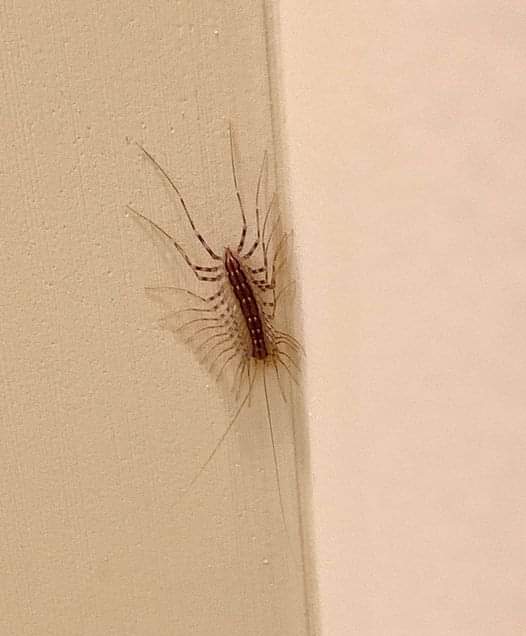When we see an insect in our home, our initial inclination may be to go for anything and smash it right away, which is understandable.
Many of these organisms can have dangerous chemicals inside them that can hurt us or even destroy us.
Centipedes with numerous legs are the weird snails that are most anxious. These tiny but terrifying-looking insects can cause more panic and anxiety than any other pest.
The next time they find one gathered in their bathroom or bedroom, one might think twice about trying to end their life.
some other pests.
Although caution is advised when dealing with these species, they are usually harmless and non-lethal.
However, this is different from many other pests. Some insects have been known to cause serious health problems, even death, if you don’t get medical help immediately.
As a result, it’s critical to understand what kinds of pests to look out for in your house.
Mosquitoes are one of the most deadly insects to be careful of. These little but annoying insects may transmit diseases such as malaria, dengue fever, and the Zika virus, all of which can be lethal if left untreated.
Ticks are another bug to watch out for; they carry Lyme disease and Rocky Mountain Spotted Fever, which can cause severe sickness or even death if not treated promptly.
Then there are bees and wasps; while their stings usually are uncomfortable, they can cause life-threatening allergic responses in some people, so it’s best to avoid them wherever possible.
Finally, fire ants may be highly harmful since their poisonous bites can cause severe inflammation and even anaphylactic shock in sensitive people.
It’s important to remember that while most home bugs aren’t dangerous, a handful can be hazardous to our health if we’re not attentive or aware of them.
As a result, you are keeping a close eye on any new pests entering your home (or yard). When confronted with anything unexpected or unsure, always study before acting!
Bullet ants are notorious for giving painful bites that make people feel like they’ve been shot.
These animals are among the giant ant species and may be found in numerous areas in the jungles of Paraguay and Nicaragua. It is best to avoid being bitten because their venom is incredibly potent.
Botfly larvae are internal parasites that may infect humans and other animals. Once these eggs are put under the skin, they will start to grow and change. This will cause changes in the tissue around them, eventually leading to an infection.
Some parents claim to have felt one of these larvae inside their bodies. Treatment for this ailment may include topical or oral medicines and surgery in difficult situations.
Fleas are bloodsucking parasites that can cause severe skin irritation, itching, and illness. Furthermore, they can spread diseases such as bubonic plague and murine typhus.
Because these pests multiply fast, keeping their number under control is challenging. As a result, flea bites should be handled carefully and treated appropriately.
Fire ants are aggressive ant species that bite painfully when disturbed. They come in 295 distinct types and may sting with venom, causing allergic responses in some people.
The venom delivered by these stings can cause swelling and agony for weeks. Fire ants have become a problem in many homes worldwide because they reproduce quickly and can cover large territories.
The kissing bug is well-known for delivering the parasite Trypanosoma cruzi through its bite. This parasite is responsible for thousands of fatalities yearly because it can induce Chagas disease in humans, which can be lethal if left untreated.
Contact with contaminated food or drink, direct contact with infected animals, or consuming infected excrement from specific animals such as cats and dogs can all lead to infection.
Because the kissing bug is deadly, precautions like wearing protective clothing should be taken whenever possible when traveling to where it is found.
The Japanese Giant Hornet is a terrifying insect, growing up to two inches in length and capable of inflicting a lethal sting; figures show that forty people die each year from the hornet’s venom.
Moving away from the Far East, tsetse flies are abundant in some areas of Africa, with their bites linked to the development of sleeping sickness, an illness that is said to have killed about 500,000 people over time.
Finally, Killer Bees are extremely vicious owing to their vast numbers; when they strike in huge groups, their stingers may do massive damage, often resulting in fatalities.
The Japanese giant hornet is a little short but packs a powerful punch. Its poisonous sting is well-known for being highly toxic and dangerous if it isn’t treated quickly or after contact.
Although this bug is endemic to Asia, other species, such as tsetse flies, remain a significant problem in several African countries. These little bloodsucking insects carry the disease known as sleeping sickness, which has become increasingly prevalent over time, killing an estimated 500,000 people throughout the continent.
Finally, Killer Bees, also known as Africanized honey bees, have a potent sting and swarm in large numbers when threatened by predators or people.
As a result, they are incredibly deadly creatures whose assaults can be fatal if not properly controlled or guarded against. It’s also worth noting that, unlike typical honeybees, which will only attack if provoked directly, killer bees will strike even if prompted indirectly or from a distance.
As a result, it’s critical to use caution when dealing with these insects to avoid significant hurt or death.
Driver ants are known for killing many animals and insects with their strong jaws in a single attack.
They don’t just hurt bugs; these small but fierce animals can also hurt people. In reality, numerous individuals have been bitten by their razor-sharp teeth.
Mosquitoes may be tiny, yet they are among the most dangerous creatures on the earth.
Millions die annually from mosquito-borne illnesses such as encephalitis, West Nile virus, malaria, and yellow fever.
While certain viruses may be treated with drugs or immunizations, there is no method to prevent mosquitos from transmitting these potentially fatal diseases.
Also, even if people try to get rid of mosquitoes in certain places by using bug sprays or getting rid of sources of standing water, people are likely to still be in danger from them.



